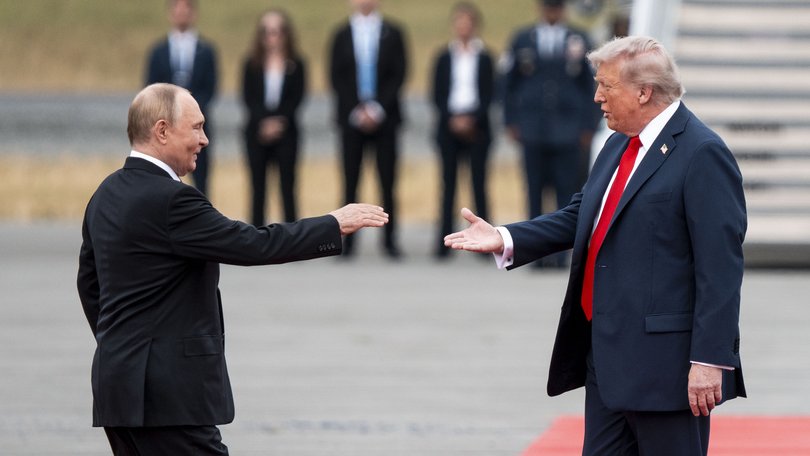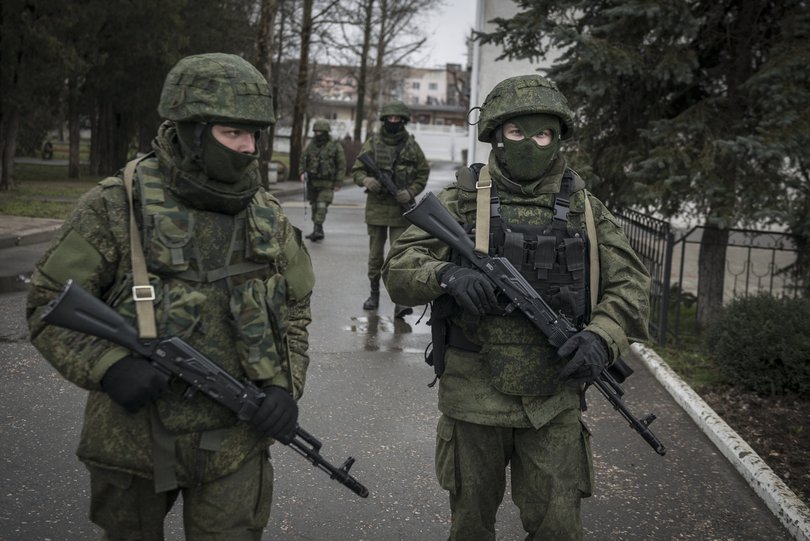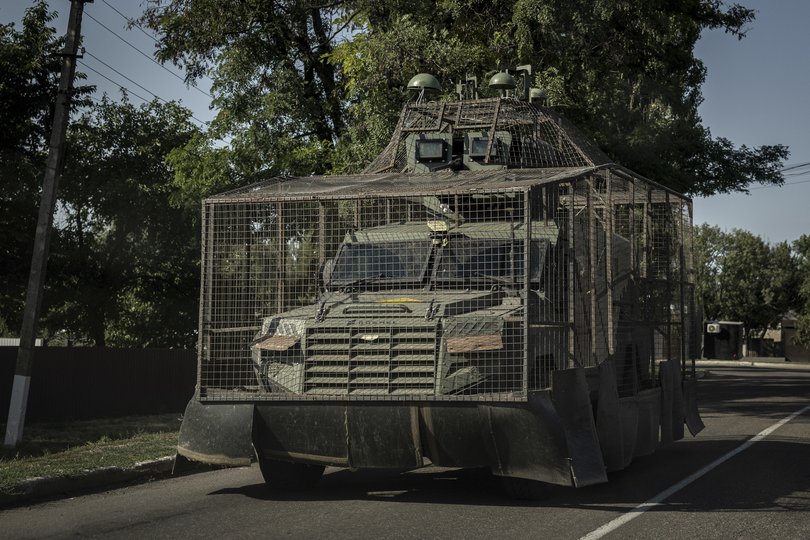NEW YORK TIMES: What Russia is doing to grab Ukrainian land while it still can

On a map, the gains hardly seem noticeable, measured in hundreds of yards, not hundreds of miles.
But as President Donald Trump presses Ukraine and Russia to make a deal to end their war, President Vladimir Putin of Russia is pushing to capture as much land as possible along a front line that stretches about 750 miles, almost the distance from Chicago to New York.
As ever-growing swarms of surveillance drones make any movement on the battlefield dangerous, the Russians are sending in small groups of soldiers on foot who are harder to detect.
Sign up to The Nightly's newsletters.
Get the first look at the digital newspaper, curated daily stories and breaking headlines delivered to your inbox.
By continuing you agree to our Terms and Privacy Policy.They effectively sneak past the Ukrainian troops, regroup, and then attack, repeating this cycle as they inch forward.
These groups gained some territory earlier this month, especially in the crucial eastern Donetsk region near the embattled city of Pokrovsk.
Larger formations of Russian troops also outflanked some Ukrainian defences with drones and sheer numbers, raising fears that the front line could start to crumble as the most concerted effort at peace talks in three years gets underway.
Ukrainian forces have largely pushed the Russians back from their recent gains and stabilised the front line after moving in reinforcements, according to interviews and battlefield maps.

The fighting, however, remains intense. Gen. Oleksandr Syrskyi, Ukraine’s top military commander, said Wednesday that Russian troops were stepping up their offensive actions in the north of Donetsk while continuing to push toward Pokrovsk.
“Given that political negotiations and deals are starting to emerge, Mr Putin is trying to use the short amount of time left to grab as much territory as he can,” said Col. Dmytro Palisa, commander of Ukraine’s 33rd Mechanised Brigade.
His team recently moved to an area near Pokrovsk, which Russian troops have been trying to capture for more than a year.
On Sunday, he sat on a dark blue pleather couch inside a dugout near the fighting. Bombs could be heard in the distance. The makeshift room, built of plywood and netting, smelled like soil.
“He doesn’t care how many Russian soldiers die or how much equipment is lost,” Mr Palisa said of Mr Putin. “What matters to him now is to seize as much of the Donetsk region as possible.
This, in turn, could have a negative consequence for us, because it would force us to enter any negotiations from a weaker position.”
It has been a long time since this was a fast-moving war. Russia gained much of the territory it now holds in 2014, when it seized the Crimean Peninsula and then fomented the proxy war that followed in eastern Ukraine, and in the early months after launching its full-scale invasion in February 2022.

Russia’s control over Ukrainian territory has been close to 20 per cent for the past year.
But recently, Ukrainian defenses along a front line running through the east and south of the country have at times flagged. Russian troops captured twice as much territory in May, after starting their spring offensive, than they had the month before.
While the Ukrainian military has stemmed significant territorial losses, the most battle-hardened brigades are exhausted after being used to plug holes and engage in the most serious fighting wherever it exists.
The Azov brigade was recently moved to the Pokrovsk area, along with brigades like the 33rd and the 59th. Many soldiers have been fighting since 2022; some, since 2014.
Despite a draft of all men ages 25 to 60, despite flashy billboard campaigns featuring soldiers riding giant cats, the Ukrainian army is having difficulty recruiting new soldiers. Last month, Ukraine even adopted a law allowing citizens older than 60 to voluntarily enlist.
To understand what is happening in the war, look no further than Donetsk, a focal point on the battlefield and in peace negotiations.
Mr Putin insists that Donetsk, which makes up the core of a historical area known as the Donbas, belongs rightfully in Russia. At his meeting with Mr Trump in Alaska on Friday, Mr Putin seemingly convinced the US President that Ukraine needed to give up the entire Donbas to Russia to achieve peace.

But Russia controls only about three-quarters of Donetsk.
In the Ukrainian-controlled area of western Donetsk, roughly the size of Delaware, fighting is fierce.
The small groups of soldiers that Russia is using, numbering two, three or four, have exploited gaps in the Ukrainian front line near the town of Dobropillia.
It is this area where drones and missiles are now pounding villages on a regular basis, destroying post offices and schools. It is where Russia has been unable to turn small gains on the battlefield into actual breakthroughs, despite suffering huge losses.
And it is where Mr Putin and Mr Trump want Ukrainian soldiers to walk away, after an 11-year fight, in exchange for a peace deal.
The battlefield map maintained by DeepState, a Ukrainian group with ties to the military, shows Russian incursions growing in early August about 12 miles northeast of Pokrovsk, with small fingers of troops making gains to the west and the north.
This area has little strategic significance but definite opportunity.
By August 11, the Russians had pushed about 8.5 miles north in two long incursions that resembled rabbit ears, east of Dobropillia, the map showed.
And then, on Aug. 15, the map showed the Ukrainian troops severing the rabbit ears from the rest of the Russian forces, effectively trapping the Russians who were there.
“Their goal is to rush forward as far as possible, stop and hold a line,” Palisa said. “They simply charged ahead and settled in place. There wasn’t any deep strategic meaning behind it.”
At least 21 Russians had surrendered in the previous three days, he said. “Those who don’t, we destroy,” he added.
Vitalii Piasetskyi, the chief sergeant of the 93rd Mechanized Brigade, said his brigade’s units were operating in two directions, including between Kramatorsk, one of the two major cities in Donetsk, and Dobropillia, “where the enemy has managed to infiltrate deep into our defensive lines.”
He said the unit had stormed and cleared small settlements.
“This is the tactic they are now using — infiltration that succeeded just beyond the limits of our area of responsibility,” Mr Piasetskyi said. He said mechanized assaults had become rare, because of the large number of drones in the air that can detect the movement of armored vehicles, trucks and motorcycles.
“It’s a creeping offensive,” he explained. His forces have discovered and eliminated many of the small groups of Russian troops. “But some of these groups do get through,” Mr Piasetskyi said.
A soldier from the 1st Corps Azov of the Ukrainian National Guard stationed at the front near Dobropillia played down the seriousness of the recent Russian incursion.
But the soldier, who spoke on the condition of anonymity because he was not authorised to talk to the media, said Russian offensive actions had increased after the most recent flurry of peace talks ended.

Both Mr Piasetskyi and Sgt. Oleksandr Karpiuk, of the “Inquisition” unmanned systems battalion in the 59th Separate Motorised Infantry Brigade, reiterated a frequent complaint from the front line — that the Ukrainian army does not have enough personnel, not enough drones.
Ukraine also does not yet have the technology to stop specialized Russian drone units that attack supply routes, Karpiuk said. The main current defense is to set up netting shields along roads and on vehicles.
The Russian units have inflicted a toll on Ukraine’s drones. The large Ukrainian attack drone known to the Russians as Baba Yaga — named for a Slavic folklore witch who lived in a hut that stood on chicken legs — used to make an average of 70 flights before being shot down. Now it can barely make 10, Mr Karpiuk said.
“We need to admit that these units are working,”Mr Karpiuk said of the Russians. “All these new drone units are a new threat to us.”
This article originally appeared in The New York Times.
© 2025 The New York Times Company
Originally published on The New York Times
